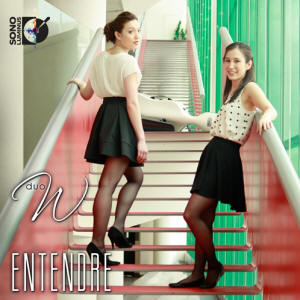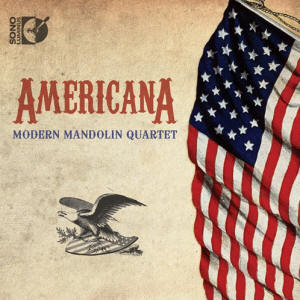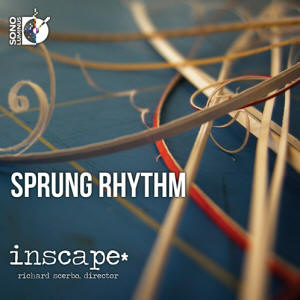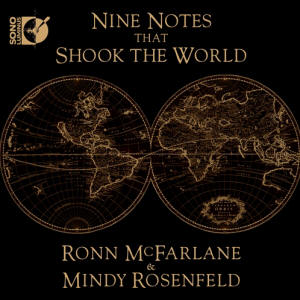|
You are reading the older HTML site
Positive Feedback ISSUE 69
Sono Luminus - Four New Blu-Ray/Redbook CDs
Many music lovers will remember Dorian Recordings which was a record label located in Troy, New York. From its inception in 1988 to its demise in the early 2000s, Dorian issued almost 600 CDs. Dorian was most famous for their early music CDs, though they also issued CDs of organ music (Jean Guillou), symphonies (Mahler's 4th), and traditional music for lute and other early music instruments. The music on these Dorian CDs, while not to everyone's taste, was always brilliantly performed. The sound quality of the Dorian CDs rivaled the best sounding CDs being sold at the time. I bought a number of the Dorian CDs and some of them are still favorites today; e.g. Ronn McFarlane's The Scottish Lute and the Baltimore Consort's On the Banks of the Helicon. In 2005, Sono Luminus bought the Dorian catalog and has reissued some of the Dorian and Dorian Discovery catalog. Sono Luminus had been founded in 1995 to develop improved methods of digital recording. While having made many recording over the intervening years, Sono Luminus had not issued any recordings on their own label. That changed with the 2005 acquisition of Dorian. After the purchase of Dorian, Sono Luminus began issuing their own releases, with the first two under the "Dorian" moniker. This was followed by 47 releases as a combined "Dorian - Sono Luminus" label plus some re-mastered box sets of older Dorian titles. In 2011, the name "Dorian" was officially dropped. To date, Sono Luminus has released 44 titles under its own name. The initial recordings released by Sono Luminus were standard Red Book CDs. However, the newer releases are on both multi-channel BluRay disks and standard Red Book CDs. When you purchase one of the new BluRay releases you actually received two disks. One disk is a standard Red Book. The other disk is a BluRay disk which allows the listener to select between multi-channel 5.1 at 24/192, multi-channel 7.1 at 24/96, and 2.0 stereo using LPCM at 24/192. The two disk sets are priced at US$19.99 and can be purchased directly from the Sono Luminus website. The following four recordings reviewed below are from the more recent BluRay releases from Sono Luminus. I listened to both the multi-channel 5.1 24/192 BluRay tracks on my home theater 5.1 system and the Red Book CD on my main stereo system. My home theater system is very modest. An Oppo 103 serves as the source which feeds into a Marantz receiver, and from there to a Morel 5.1 speaker system. This modest system, while perfectly fine for listening to dialogue, volcanic eruptions, earthquakes, and fighter jets roaring by, is at the lower end of the audiophile spectrum. Despite the sonic limitations of my home theater system, the music coming out of the speakers was very musical. The 5.1 multi-channel effect was also very nice. The benefits of the multi-channel recording varied from track to track. On the best tracks, the music was spacious. You were immersed in the sound. It was like being seated in the front row in a small (50-75 seats), slightly reverberant hall. A very nice way to listen to small chamber ensembles. Of course, the primary test of the sonics of the four recordings was done on my main system. I ripped the Red Book CDs to an external hard drive connected via USB to my PC laptop. Using JRiver Media Center 18, the music was transferred from the external hard drive to the laptop. The music was sent from the laptop via USB to a USB to SP/DIF coax converter that I am beta testing for a manufacturer (review upcoming). From there the music went to a Lynx Studio Hilo ADC/DAC and from there to my Herron M-1A mono block amps to Janszen zA2.1 loudspeakers. I used the analogue volume control in the Lynx Studio Hilo to control volume. The first recording I played on my main system was the most recently released Sono Luminus disk: Entendre by the Duo W. Duo W consists of a violinist and cellist. From the first note I was sucked into the music. This surprised me as the music was Zoltan Kodaly's Duo for Violin and Cello, Op. 7. This is music I had never heard before. Also, I am not that big a fan of chamber music, though I do have a few pieces that I listen to. What drew me into the music was the 'You Are There' sonics and the exquisite musicianship. The two performers were right there in the living room. If I closed my eyes I was in the recording studio seated about 10 feet / 3 meters from the performers. I had a friend come over who is very picky about the sound quality of the music he listens to. He was very favorably impressed with both the sound and the performances of Entendre. I then played the Americana CD by the Modern Mandolin Quartet. The sound was the same as Entendre. The music arose out of a totally black background. The musicians were right there in front of me. Another spectacular recording. Next came Sprung Rhythm performed by Inscape* which is a 13 member chamber ensemble. The sound was cut from the same cloth as the previous two CDs. The sound was not quite as "You Are There". However, it is much harder to record 13 instruments as opposed to just two instruments. I don't think audiophiles will complain about the sound quality of this recording. Finally I played the fourth CD: Nine Notes that Shook the World which is a lute and wooden flute duo. Ronn McFarlane is the lutenist. For comparison purposes I went back and forth between this new recording and The Scottish Lute CD with Ronn McFarlane as lutenist that Dorian had released in 1992. I had always thought The Scottish Lute had very good sound. It still does. But in comparison to Nine Notes that Shook the World there is a noticeable difference. The new recording is richer sounding - more full bodied - more like a live performance. So, from a sound perspective the four Sono Luminus recordings are topnotch. Audiophiles will be very satisfied with them. How about people, such as myself, that like both good sound and good music? Are the music and performances as good as the sonics?
Entendre by Duo W Contents Zoltan Kodaly (1982 -1967), Duo for Violin and Cello, Op.7 (composed 1914) Johan Halvorsen (1864 - 1935), Passacaglia in G minor (on a theme of George F. Handel) (composed 1897) Adrien-Francois Servais (1807 - 1866) / Hubert Leonard (1819 - 1890), Grand Duo de Concert sur deux airs nationaux anglais (composed circa 1860) Maurice Ravel (1875 - 1937), Sonata for Violin and Cello (composed 1920-1922) John Philip Sousa, (1854 - 1932), Stars and Stripe Forever (composed 12/25/1896) While I am familiar with the music of Kodaly, Halvorsen, Ravel, and Sousa I was not familiar with any of the music on this CD other than Stars and Stripes Forever. Having now played the CD numerous times I can say that I enjoy listening to all of the tracks. One of the joys of listening to chamber music is when the musicians are in total sync with each other. The two young women that form Duo W play as if they are one person. Also, probably because they are young, they put maximum emotion and energy into their performance. The best comparison I can think of are the Beethoven Piano Sonatas recorded by Perlman/Ashkenazy early in their careers. Those recordings were vibrant and alive as is the music on this CD. My favorite tracks are the Halvorsen and the Servais/Leonard, The Halvorsen Passacaglia sounds in parts like it could have been written by Johann Sebastian Bach. Very nice. The Servais/Leonard was written to be performed on stage by the composers. It was written to show off the technical skills of Servais and Leonard, which were considerable. Both had international reputations, though Servais was better known than Leonard. The music was also written to be a crowd pleaser. It includes variations of several well known English songs which will be recognizable by most listeners. Very humorous.
Americana by Modern Mandolin Quartet Tracks 1. Hoe-Down", from Rodeo - Aaron Copland 2. String Quartet No. 12 in F, Op. 96, B. 179, ("The American") - Antonin Dvorak. I. Allegro ma non troppo. II. Lento. III. Molto vivace. IV. Finale: Vivace, ma non troppo 6 "Cool", from West Side Story - Leonard Bernstein 7. Shenandoah 8. Three Preludes - George Gershwin. Prelude I: Allegro ben ritmato e deciso. Prelude II: Andante con moto e poco rubato. Prelude III: Allegro ben ritmato e deciso 11. Bill Monroe Medley - Roanoke, Lonesome Moonlight Waltz, Wheel Hoss, and Rawhide 12. Philip Glass: from String Quartet No.3 "Mishima". I. 1957 - Award Montage. II. November 25 - Ichigaya. III. 1962 - Body Building. IV. Mishima/Closing. Bonus Track: 16. Irish Roots Medley If you like listening to the L.A. Guitar Quartet you will like the Modern Mandolin Quartet. The Modern Mandolin Quartet takes fun music and arranges it for four mandolins. As you can see by the above track listing the type of music ranges from classical, to popular, to film score, to traditional. All four members of the quartet have been professional musicians for many years. The level of musicianship is excellent as is their ensemble playing. I really enjoyed listening to all of the tracks on this album. My favorite pieces are the Hoe-down from Copland's Rodeo and the Dvorak String Quartet. The Hoe-down is fun music regardless of the instruments it is being played on. It is just good foot-stomping music. My liking of the Dvorak surprised me. While I love Dvorak's orchestral works, I was never keen about his chamber music. After hearing this performance of the String Quartet No. 12 I am going to have to go back and relisten to the Dvorak quartets. The inclusion of music from Philip Glass' String Quartet No. 3 on this album was quite a surprise. Glass's minimalist music is not to everyone's taste, including mine. My vision of hell is to be strapped in a chair and made to listen to all five hours of Glass's opera Einstein on the Beach for eternity (and yes I do own a copy of it, but have never been able to listen all of the way to the end). Glass's film score music, on the other hand, I find quite enjoyable. I listen to Glass' music for the film Koyaanisqatsi frequently. However, my favorite Glass film score is Mishima. The music from that film score was arranged by Glass as his String Quartet No. 3. While a quartet can not reproduce the sound of the orchestra that was used to record the original film score, the Modern Mandolin Quartet's rendition is wonderful to listen to.
Sprung Rhythm by Inscape* Tracks 1. Collection of Sand - Nathan Lincoln-DeCusatis. I. An Ocean of Words. II. Herd Mentality. III. Melodic Abyss 4. Three Poems of Jessica Hornik - Joseph Hallma. I. East Hill Road. II. Pleasant Bay. Interlude. III. Postscript: The Harebell. Epilogue 9. Con slancio - Justin Boyer 10. Chopin Syndrome - Nathan Lincoln-DeCusatis. I. Part One. Theme-Prelude Variations 1: Scherzo. II. Part Two. Variation 2: Chorale Variation 3: Nocturne. III. Part Three. Theme-Intermezzo Variation 4: Quasi Alla Polacca Theme-Postlude 13. imagined landscapes: six Lovecraftian elsewheres - Joseph Hallman. one. two. three. four. five. six. Bonus Tracks (These tracks only available on the Blu-ray or as bonus digital download content) 19. Auguries - Justin Boyer. I. Attus Navius loses his pig. II. Finds it and thanks god(s). III. Decides birds will show him the way I approached listening to Sprung Rhythm with trepidation. It was all modern music. When the San Diego Symphony gives a world premier of a modern composition I am usually either bored to tears or assaulted by unpleasant dissonance. The music on Spring Rhythm is totally different from what I had imagined. This is modern classical music that will appeal to most classical music listeners. Yes, the pieces contain weird tonalities, strange rhythms, different structures, and dissonance. However, to a person who frequently listens to mainstream classical composers such to Beethoven, Mozart, Brahms, Stravinsky, Shostakovich, etc. the pieces on this CD will be instantly recognizable as music, not noise. I love replaying this CD as each time I play it I hear something, feel something that I had not experienced before. The pieces are all different from one another. Some pieces are quiet and tranquil. Other are loud and raucous. I like all of the tracks and don't really have a favorite.
Nine Notes that Shook the World by Ronn McFarlane and Mindy Rosenfeld Tracks: 1. Grays Inn - John Adson - My Lord Willoughby's Welcome Home - John Dowland 2. Brando di Cales - Cesare Negri - Passo e mezzo - Fabritio Caroso da Sermoneta 3. My Lady Carey's Dompe - Anonymous - Lady Wynkfield's Rownde 4. Rondeau dans Zaide arr. by Michel Blavet 5. Sonata in G Major - G. F. Handel Adagio Allegro Adagio. Bourree anglaise 9. Minuetto 10. Andante (from BWV 1034) - J. S. Bach 11. The Thistle - James Oswald 12. The Laurel - James Oswald 13. Dorrington Lads - Traditional - Yeil, Yeil - A Wife of My Ain 14. Passemeze - Adrian Le Roy 15. Premier Suite in E minor - Joseph Bodin de Boismortier. Prelude Lentement. Allemande Modent. Rondeau `Les Charities' Gracieusement. L'emerville Gaiment. Gavotte Menuet 21. Minuetto and Variations - Pietro Locatelli 22. Sitting in the Stern of a Boat - Traditional - Thugamar Fein an Samradh Linn - The Road to Lisdoonvarna - The Star Above the Garter - Carnac 23. Branles de Village - Robert Ballard As you can tell by the names of the composers (Handel, J. S. Bach, Dowland, Locatelli, etc.) this CD is music from the Baroque. The two performers are known for their expertise in early music. Ronn McFarlane is one of the top lutenists in the world with over 30 recordings to his name either as soloist or as a member of a group. Mindy Rosenfeld is a founding member of the Baltimore Consort as well as a member of the San Francisco Philharmonia Baroque Orchestra. The pieces are all duets with McFarlane playing either a 10 or 13 course lute. Rosenfeld plays a variety of period flutes, fifes, and harp. She even plays a 17th century bagpipe on one track. If you heard any of the Dorian recordings of McFarlane and/or the Baltimore Consort you will know the treat that awaits you with this recording - beautiful Baroque chamber music played on copies of original instruments by early music experts. For the most part, this is not foot-stomping music though there are a few tracks that will get your toes tapping. Most of the CD is quiet, sedate music. Imagine Lords and Ladies dancing a stately minuet. If I want to relax after a hard day at the office I play this CD and let the calm music wash over me. Summary Over the years I have reviewed quite a few wonderful recordings. However, I don't remember ever having as much musical enjoyment as I did reviewing these four recordings. All four recordings have state of the art sound. The music is interesting both intellectually and musically. The performances are marvelous. All four CDs receive my highest recommendation. Sono Luminus
|




